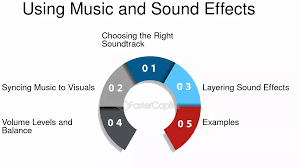Discover how Indian cinema masterfully uses music to build suspense and heighten emotions. Explore techniques, iconic examples, and the psychology behind sound in Bollywood thrillers.
In Indian cinema, music is not just an accessory; it is a storytelling tool that enhances emotions, builds tension, and intensifies suspense. Whether in Bollywood thrillers or regional films, soundscapes play a crucial role in keeping audiences on the edge of their seats. From eerie background scores to heart-pounding beats, music dictates the rhythm of storytelling, guiding viewers through a rollercoaster of emotions.
This article explores how Indian cinema harnesses the power of sound to create suspense, the techniques composers use, and how it differs from Western approaches. We will also examine famous examples and the psychology behind why music has such a profound impact on the viewer’s experience.
The Role of Sound in Building Suspense
1. The Psychological Impact of Music
Music has the ability to manipulate human emotions, creating anxiety, excitement, or relief. Suspenseful soundtracks often use:
- Minor chords to evoke unease.
- Dissonance to create tension.
- Silence to build anticipation.
- Sudden crescendos to shock the audience.
In Indian cinema, these elements are carefully crafted to sync with visual cues, making scenes more immersive and gripping.
2. Background Scores: The Silent Storyteller
Background scores are one of the most effective ways to generate suspense. Renowned Indian composers like A.R. Rahman, Sandeep Chowta, and Ilaiyaraaja have mastered the art of suspenseful soundscapes. These compositions:
- Signal an impending twist.
- Guide the audience’s emotional response.
- Subtly foreshadow danger.
For instance, in “Kahaani” (2012), the score builds gradually, keeping viewers uncertain about Vidya Bagchi’s true motives.
Techniques Used in Indian Cinema to Create Suspense
1. The Use of Silence
Silence can be more terrifying than loud music. In many Bollywood thrillers, moments of complete stillness heighten anticipation. The sudden lack of sound makes audiences hyper-aware, making the next sound—be it a whisper, a heartbeat, or an explosion—more impactful.
2. Traditional Instruments with a Modern Twist
Indian composers blend traditional instruments with modern sounds to craft unique suspense scores. Some commonly used instruments include:
- Tabla & Mridangam – Creates an unpredictable rhythm.
- Sitar & Sarangi – Produces eerie, otherworldly sounds.
- Electronic Synths – Adds an element of unpredictability.
3. Leitmotifs: Musical Signatures for Characters or Events
Leitmotifs are recurring musical themes associated with a particular character, emotion, or event. In “Andhadhun” (2018), the piano theme signifies tension and deception, guiding the audience’s perception of events.
4. Slow-Building Crescendos
A hallmark of suspenseful Indian film music is the gradual escalation of intensity. This slow build-up keeps audiences engaged, preparing them for a climactic revelation or jump scare.
How Indian Cinema Differs from Hollywood in Suspense Music
While Hollywood often relies on orchestral arrangements and electronic scores, Indian cinema incorporates:
- A mix of classical Indian and Western techniques.
- Lyrical interludes within thrillers (though less common today).
- Extended musical sequences even in suspense films.
For instance, Hollywood’s “Jaws” (1975) uses a simple two-note motif to signal danger, whereas Bollywood’s “Ek Hasina Thi” (2004) uses a mix of haunting vocals and slow beats to create a lingering sense of dread.
Iconic Examples of Suspenseful Music in Indian Cinema
“Kahaani” (2012)
The film’s haunting score amplifies its mystery, making even simple conversations feel eerie.
“Andhadhun” (2018)
The piano-driven soundtrack plays a pivotal role in the narrative, reflecting the protagonist’s perspective.
“Talaash” (2012)
A perfect blend of melancholy and tension, the film’s soundtrack keeps viewers questioning reality.
Music is an indispensable tool in Indian cinema, especially in thrillers and suspense films. Through minor chords, silence, traditional instruments, and innovative sound design, composers create an auditory experience that heightens suspense and grips audiences. Unlike Hollywood, Indian cinema infuses its musical traditions into suspenseful storytelling, resulting in uniquely immersive narratives.
Whether it’s a slow crescendo building towards a shocking revelation or an eerie leitmotif signaling danger, the power of sound in Indian cinema is undeniable.
FAQ
1. How does Indian cinema use music differently than Hollywood?
Indian cinema blends classical Indian instruments with modern sounds, often incorporating lyrical interludes even in suspense films.
2. Why is silence an effective tool in suspenseful music?
Silence creates anticipation and makes the audience hyper-aware, making any sudden sound more impactful.
3. What are some famous Indian thrillers with great suspenseful music?
Films like “Kahaani,” “Andhadhun,” and “Talaash” are excellent examples of suspenseful Indian cinema with powerful soundtracks.
4. How do composers create suspense in Indian film music?
They use minor chords, dissonance, slow-building crescendos, and traditional Indian instruments to craft tension-filled soundscapes.
By understanding these techniques, filmmakers and audiences alike can better appreciate the artistry behind the suspenseful soundtracks of Indian cinema.
